How to use Voltage Modular How to make a Poly synth 1
This is yosi from Chillout with Beats.
Voltage Modular Core + Electro DrumsSince I bought, I will write what I can do with the increased modules.
The content of this article isVoltage Modular Core + Electro DrumsIs required.
The free version of Nucleus cannot be used because there is no module. There are four articles for Nucleus:
Those who have studied the mechanism of synths in detail are recommended to purchase it.
In this blog, I will write at least the following articles in the future.
・ Detailed usage of SUPER OSCILLATOR and SUPER LFO
・ Detailed usage of DRUM TRIGGER SEQUENCER
-Detailed usage of Sampler1(Already)
-Detailed usage of Plug-In Host(Already)
-FormulaUtilization example of
How to use Voltage Modular Modules required for Poly synths
Voltage Modular Core + Electro DrumsI will make it using the Poly type module that increased in.
The idea is the same as mono, but you need to use a Poly-enabled module and finally convert Poly to Mono.
The modules used are as follows.
・ POLY AMPLIFIER
・ POLY FILTER
・ POLY ENVELOPE GENERATOR
・ MINI-POLY-TO-MONO-CV
How to use Voltage Modular Add an LFO to a Poly synth
This is also easy, but Core adds two types of LFOs.
This time, I will explain a simple LFO.
LFO commentary (Google Translate + α)
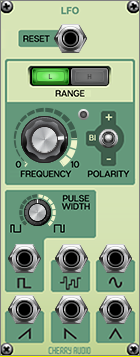
It's an ordinary LFO. BMP synchronization is not supported, but you can use it by forcibly using RESET.
(I think this is a module that should be in Ignite ...)
Also, the number of types of waveforms is increasing, and Polarity is very convenient.
Google Translate and a brief explanation of each parameter.
Reset jack– If this input jack receives a trigger or gate CV that exceeds +2.5 volts, it will force the LFO cycle to reset. Connect the "Trig" or "Gate" jack in the CV Out section of the IO panel to this input jack to reset the LFO each time a new note is played, or connect the "Trig Out" from the sequencer to connect the LFO. Synchronize with the sequence.

With Reset, even if you cannot synchronize with BPM, you can adjust the cycle even if there is a slight deviation by resetting at regular intervals.
Range– The “L” (low) and “H” (high) buttons change the frequency range of the LFO. When "L" is selected, the LFO is a typical low frequency or sub audio rate oscillator in the range 0.02 Hz to 10 Hz. If you select “H”, the frequency range of the LFO will be between 5 Hz and 400 Hz, allowing you to modulate the audio rate.
Frequency– Set the frequency or rate of the LFO.The frequency value is expressed in Hz, that is, the number of cycles per second.This means that 1 Hz means that it takes 1 second to complete the complete cycle of the waveform.So 1 Hz = 2 seconds, 0.5 Hz = 4 seconds, and so on.However, you don't need to know the math because the LED next to the knob will flash to show the current frequency of the LFO.
Polarity– Sets the polarity of the LFO output waveform. In "biposition" ("bipolar", that is, above and below 0V), the LFO outputs a signal in the range of -5V to 5V. At the + position, the output signal will be in the range 0V to 5V, and at the-position, the signal will be in the range -5V to 0V. Notice that at the + and-positions, the LFO amplitude is halved and the modulation center points are shifted to 2.5V or -2.5V, respectively.This may be desirable in many situations, but care should be taken when using these modes with pitch modulation.For example, if you use the + mode to create vibrato, the patch will sound great on its own, but the oscillator will actually be slightly sharper and out of harmony with the rest of the world!

Bipolar and unipolar are common in the modular world.It is bipolar that moves from minus to plus, and unipolar that moves only with +-.Please see the GIF video below.

Pulse Width– This knob adjusts the width of the pulse wave output, or “duty cycle”. At 50%, a symmetric square wave is produced.This means that the lengths of the positive and negative parts of the cycle are equal.Turning the knob clockwise increases the positive part of the LFO cycle.Turning counterclockwise reduces the positive part of the cycle.Notice that the knob reaches 0% and 100%.In these extreme cases, the modulation will be static.
Waveform Output jacks– These are output jacks for LFO signals.Each jack outputs a different waveform and can be used in any combination at the same time.Shape options are square, random (sample and hold), sign, ramp up, ramp down, and triangle.
Add an LFO to modulate the pulse width
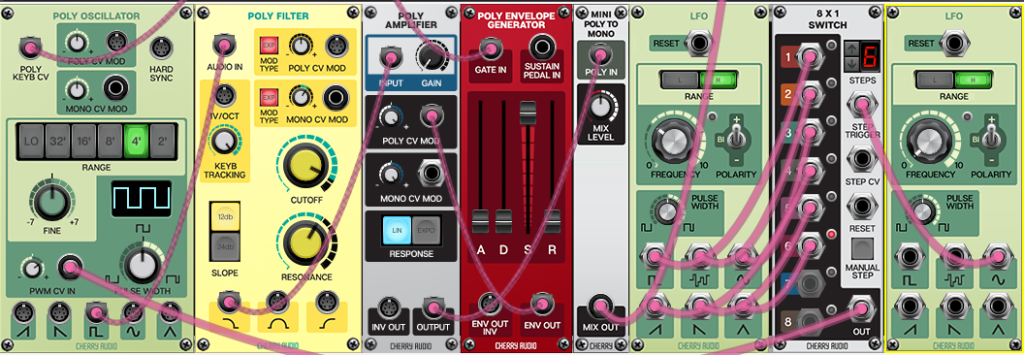
It's just modulated and boring, so I'll try a little ingenuity.
The output of an LFO differs depending on the waveform.So, try connecting the output to "EIGHT TO ONE SWITCH" and switching it with a switch.
And I played with the switch to be modulated by LFO again.
It's a very simple thing, but it's a sound that you can't already get with a normal synth, and it's a way to modulate it.
How to use Voltage Modular Summary of how to make a Poly synth
Voltage Modular has the impression that there is little modulation input for the knob, but since it is modular, you can do various things depending on your ingenuity.
Next time, I will write a commentary article on SUPER LFO.
Actually, I thought I'd put it lightly in this time.
However, since it has more functions than I expected, I decided to separate the articles so that I could write them properly.
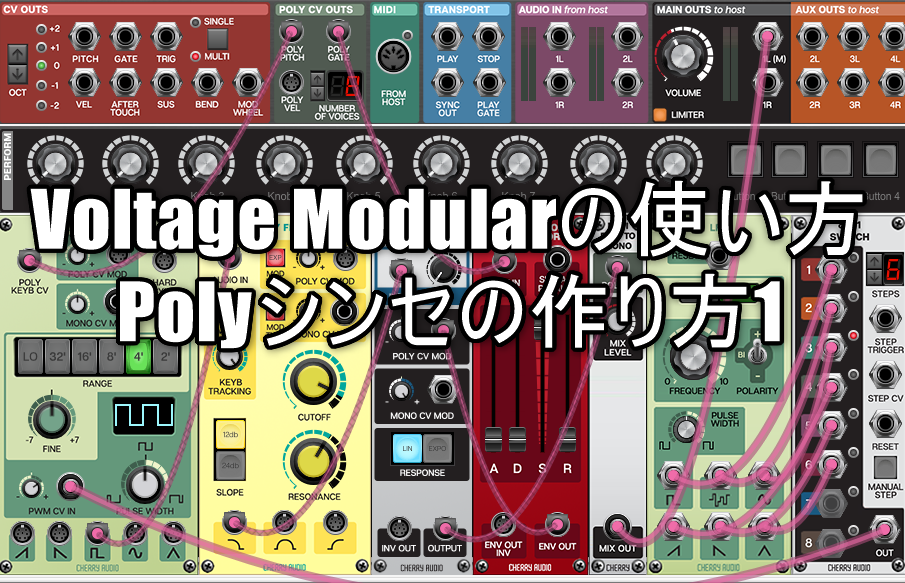
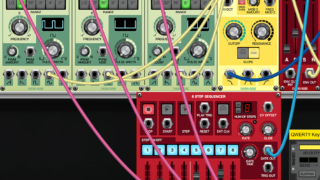
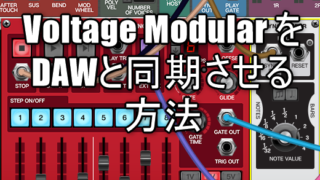
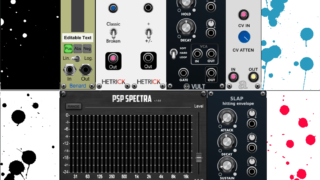
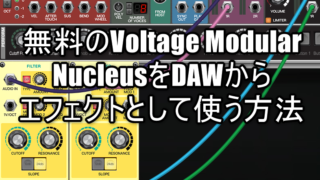


Comment